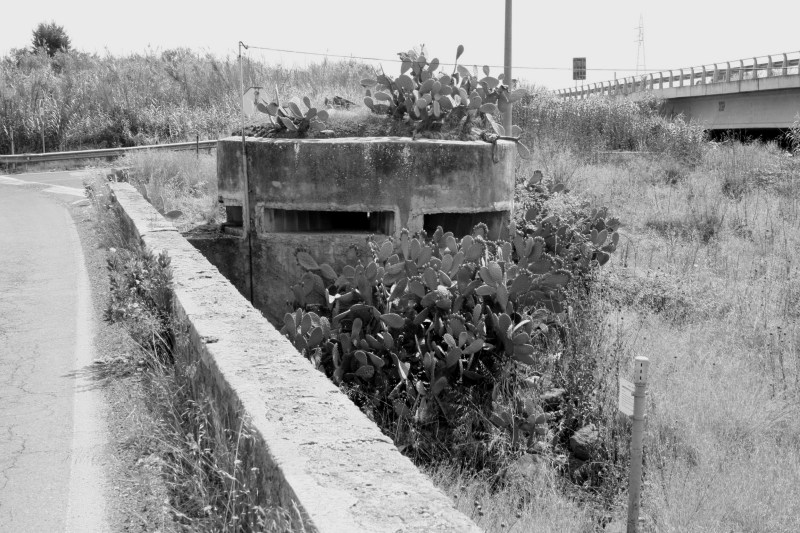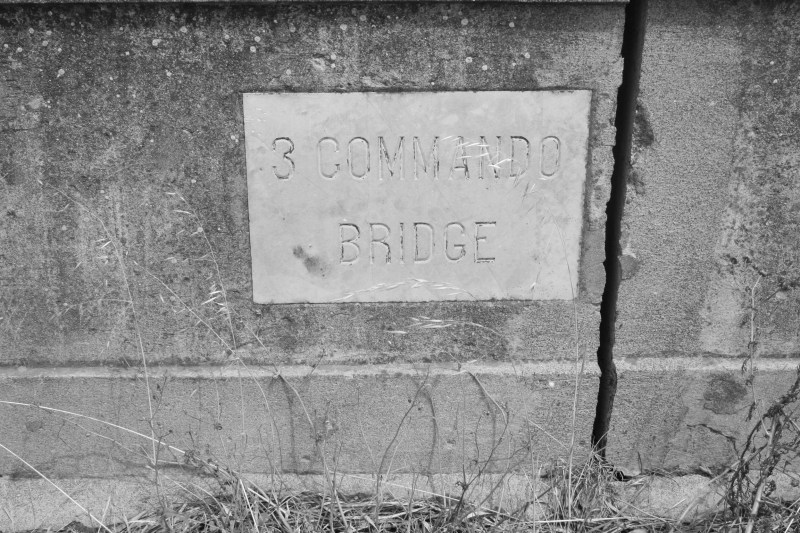Lentini – Punta dei Malati
Punta dei Malati – 3 Commando Bridge. July 14th/15th 1943.
Underneath the story about the forgotten bridge at Lentini. This story comes from the BBC initiative to preserve WW2 stories written by the public. You can find this story and many others here.
Three kilometres north of Lentini near to the city of Syracuse on the island of Sicily, lies the Malati Bridge. Today it is now on a minor road, overshadowed by an autostrada on massive concrete piles. This was not so in 1943.
The Casablanca Conference in January 1943 attended by Churchill, Roosevelt and their military and civil advisers, decided that on victory in North Africa the next step in the war against the Axis forces would be the invasion and reduction of the island of Sicily. The “return to Europe”. Timed to take place in mid 1943 and code-named “Husky” the D-Day for this operation would be the 10th of July 43. The British and Commonwealth 8th Army and the US 7th Army, along with allied naval and air arms would make up the invading forces, landing by sea and air.
The invasion of Sicily, a massive undertaking, was initially a sad tale of bad luck, poor planning and a large loss of allied troops to friendly-fire. Witness the Military Cemeterys at Catania, Syracuse and Agira and the numbers of those with “no known grave” commemorated on panels at the Cassino Military Cemetery. But with dogged determination both armies secured their landings and the Axis forces were engaged..
By the 13th of July the 8th Army under the command of General Montgomery was established ashore and moving north. The intention was to push the Axis towards Messina cornering them in the north east of Sicily. The officer commanding No 3 Commando, Lt.Col. J.F.Durnford-Slater was summoned to the quay at Syracuse and given orders by General Dempsey to capture the Malati Bridge over the river Leonardo. Montgomery had realised that this bridge was on the main route north to Catania and wanted it intact and in Allied hands to ensure that the 50th Division could continue its advance.
3 Commando were put ashore north of Augusta in the Bay of Agnone from the infantry assault ship HMS Prince Albert and following the railway line, headed west towards Lentini. It had been thought that the only resistance would be from scattered Italian defenders, but straight away the commandos ran into the 3rd Battalion of the Hermann Goering Regiment. This meant that all the way to the bridge there was intensive fighting, but their objective was reached by 0300 on the 14th July.
The Italians guarding the bridge were quickly overcome and it came under British control. The demolition charges were removed and the commandos now had the task of holding the bridge until the arrival of the 50th Division which was fighting its way up Highway 114. This was the route north for the 8th Army and south for the re-supply of the German forces and their principal evacuation route north, so the Malati Bridge became the focus of numerous firefights. A German Mk VI Tiger tank appeared not more than 200 yards away and began firing its heavy machine gun towards the commandos who were around and under the bridge with no cover. A number of men were wounded and some, including Lt. Tony Butler who had joined No 3 (Army) Commando from the North Irish Horse Tank Regiment, were killed. More tanks could be heard coming down the road and with the 50th Division still not in sight, after a short discussion it was decided that the remaining commandos would withdraw into the hills to the east and reform. Once there they came under heavy fire again and they were ordered to set off in small parties to make for a prearranged rendezvous on the coast. With great difficulty most reached this objective, although some were captured (only to escape their captors shortly afterwards) and the majority of the survivors after a few square meals and a couple of nights’ rest began to look forward to the next battle. Lt. Butler and Lt. Cave along with four other commando dead, were buried at the bridge. The other dead and wounded were recovered from the surrounding area, the total of casualties from the action being 153 killed, wounded and missing. This figure might have made the operation seem like a failure, but the fact that the bridge was not blown and the confusion caused the Axis forces by 3 Commando meant that the 50th Division could continue it’s advance north.
After the fall of Catania, General Montgomery ordered that a stone be carved with “3 Commando Bridge” and this stone cemented into the Punta dei Malati bridge.
May 2005.
One reason for my latest trip to Sicily was to visit the Malati Bridge, which with the help of the Lentini stationmaster and a private motorist, plus a few Euros I managed to do.
The bridge today looks exactly as it did in a 1943 photograph, Montys stone still in place and the large pill box guarding one end. Standing under the bridge (as Lt. Butler and his comrades had done), on this hot, sunny, quiet afternoon it was hard to imagine those July days 62 years ago.
Lt. Butler and Lt. Cave are buried side by side in Catania Commonwealth Military Cemetery. Other officers and men of 3 Commando are buried in Syracuse Commonwealth Military Cemetery. They and those of 3 Commando (Army) who survived will not be forgotten. C.H.
.
WE WILL REMEMBER THEM.
Note:
For an in depth account of this action see “ Storm From The Sea”.
by Peter Young (1989) New edition – Wren’s Park 2002.
This article is dedicated to the memory of Lt. Anthony Danvers Cavendish Butler of the North Irish Horse, Royal Armoured Corps and No. 3 Commando.
Killed on 14th July 1943 aged 27.


